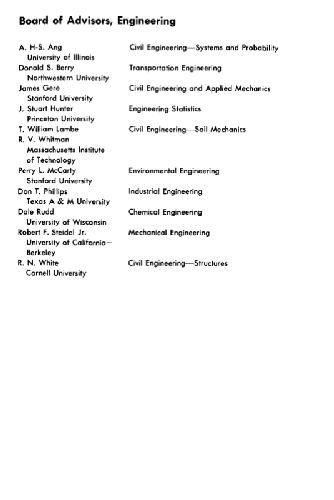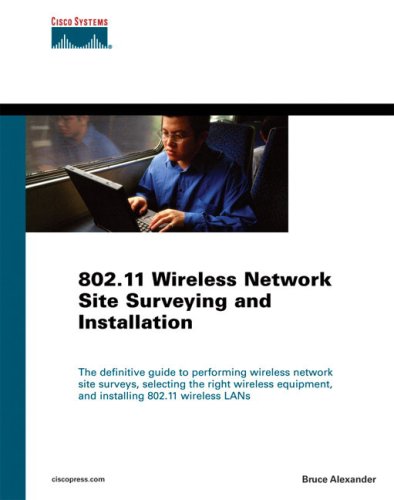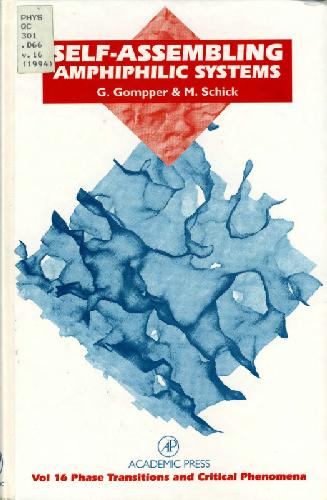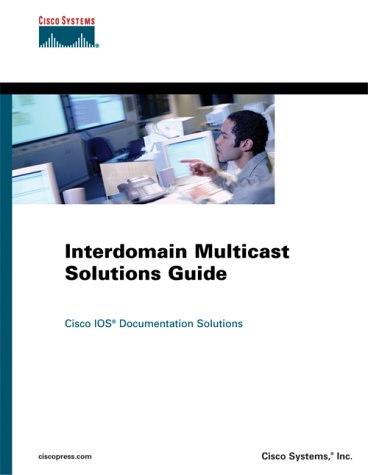Enrique Acha, Claudio R. Fuerte-Esquivel, Hugo Ambriz-Pérez, César Angeles-Camacho9780470852712, 0470852712
Table of contents :
Team LiB……Page 1
Cover……Page 2
Contents……Page 9
Preface……Page 15
1.1 Background……Page 18
1.2 Flexible Alternating Current Transmission Systems……Page 19
1.4 FACTS Controllers……Page 20
References……Page 23
2.1 Introduction……Page 26
2.3 Controllers Based on Conventional Thyristors……Page 28
2.3.1 The Thyristor-controlled Reactor……Page 29
2.3.2 The Static VAR Compensator……Page 33
2.3.3 The Thyristor-controlled Series Compensator……Page 35
2.3.3.1 Thyristor-controlled Series Capacitor Equivalent Circuit……Page 36
2.3.3.2 Steady-state Current and Voltage Equations……Page 37
2.3.3.3 Thyristor-controlled Series Capacitor Fundamental Frequency Impedance……Page 41
2.4 Power Electronic Controllers Based on Fully Controlled Semiconductor Devices……Page 45
2.4.1 The Voltage Source Converter……Page 46
2.4.1.1 Pulse-width Modulation Control……Page 47
2.4.1.2 Principles of Voltage Source Converter Operation……Page 50
2.4.2 The Static Compensator……Page 51
2.4.3 The Solid State Series Compensator……Page 52
2.4.4 The Unified Power Flow Controller……Page 53
2.4.5 The High-voltage Direct-current Based on Voltage Source Converters……Page 55
2.5 Control Capabilities of Controllers Based on Voltage Source Converters……Page 57
References……Page 58
3.1 Introduction……Page 60
3.2 Transmission Line Modelling……Page 61
3.2.1.1 Calculation of Lumped RLC Parameters……Page 62
3.2.1.3 Internal Impedances……Page 64
3.2.1.4 Ground Return Impedances……Page 65
3.2.2 Ground Wires……Page 67
3.2.3 Bundle Conductors……Page 68
3.2.4 Double Circuit Transmission Lines……Page 71
3.2.5 The Per-unit System……Page 72
3.2.6 Transmission-line Program: Basic Parameters……Page 73
3.2.7 Numerical Example of Transmission Line Parameter Calculation……Page 76
3.2.8 Long Line Effects……Page 77
3.2.9 Transmission Line Transpositions……Page 79
3.2.10 Transmission Line Program: Distributed Parameters……Page 80
3.2.11 Numerical Example of Long Line Parameter Calculation……Page 83
3.2.12 Symmetrical Components and Sequence Domain Parameters……Page 84
3.2.14 Numerical Example of Sequence Parameter Calculation……Page 86
3.3.1 Single-phase Transformers……Page 87
3.3.2 Simple Tap-changing Transformer……Page 89
3.3.3 Advanced Tap-changing Transformer……Page 90
3.3.4 Three-phase Transformers……Page 92
3.3.4.1 Star–Star Connection……Page 93
3.3.4.3 Star–Delta Connection……Page 95
3.3.5 Sequence Domain Parameters……Page 96
3.4 Rotating Machinery Modelling……Page 99
3.4.1 Machine Voltage Equation……Page 100
3.5 System Load……Page 103
3.6 Summary……Page 106
References……Page 107
4.2 General Power Flow Concepts……Page 110
4.2.1 Basic Formulation……Page 111
4.3.1 Early Power Flow Algorithms……Page 114
4.3.2 The Newton–Raphson Algorithm……Page 115
4.3.4 Generator Reactive Power Limits……Page 118
4.3.5 Linearised Frame of Reference……Page 119
4.3.6 Newton–Raphson Computer Program in Matlab® Code……Page 121
4.3.7 The Fast Decoupled Algorithm……Page 128
4.3.8 Fast Decoupled Computer Program in Matlab® Code……Page 129
4.3.9 A Benchmark Numerical Example……Page 132
4.4.1 Load Tap-changing Transformers……Page 136
4.4.1.1 State Variable Initialisation and Limit Checking……Page 138
4.4.1.2 Load Tap Changer Computer Program in Matlab® Code……Page 139
4.4.1.3 Test Case of Voltage Magnitude Control with Load Tap-changing……Page 144
4.4.1.5 Control Coordination between One Load Tap Changer and One Generator……Page 147
4.4.2 Phase-shifting Transformer……Page 149
4.4.2.1 State Variable Initialisation and Limit Checking……Page 151
4.4.2.2 Phase-shifter Computer Program in Matlab® Code……Page 152
4.4.2.3 Test Cases for Phase-shifting Transformers……Page 157
4.5.1 Sparsity-oriented Solutions……Page 161
4.5.2.1 Test Case of Truncated Adjustments Involving Three Load Tap-changing Transformers……Page 162
4.5.3 Special Load Tap Changer Configurations……Page 164
4.5.3.1 Test Case of Sensitivity Factors in Parallel Load Tap-changing Operation……Page 165
4.6 Summary……Page 166
References……Page 167
5.1 Introduction……Page 170
5.2 Power Flow Solutions Including FACTS Controllers……Page 171
5.3.1 Conventional Power Flow Models……Page 172
5.3.2 Shunt Variable Susceptance Model……Page 175
5.3.3 Static VAR Compensator Computer Program in Matlab® Code……Page 176
5.3.5 Static VAR Compensator Firing-angle Computer Program in Matlab® Code……Page 179
5.3.6 Integrated Transformer Firing-angle Model……Page 183
5.3.7 Nodal Voltage Magnitude Control using Static VAR Compensators……Page 184
5.3.8 Control Coordination between Reactive Sources……Page 185
5.3.9 Numerical Example of Voltage Magnitude Control using One Static VAR Compensator……Page 186
5.4.1 Variable Series Impedance Power Flow Model……Page 188
5.4.2 Thyristor-controlled Series Compensator Computer Program in Matlab® Code……Page 190
5.4.3 Numerical Example of Active Power Flow Control using One Thyristor-controlled Series Compensator: Variable Series Compensator Model……Page 195
5.4.4 Firing-angle Power Flow Model……Page 197
5.4.5 Thyristor-controlled Series Compensator Firing-angle Computer Program in Matlab® Code……Page 199
5.4.6 Numerical Example of Active Power Flow Control using One Thyristor-controlled Series Compensator: Firing-angle Model……Page 204
5.4.7 Numerical Properties of the Thyristor-controlled Series Compensator Power Flow Model……Page 206
5.5.1 Power Flow Model……Page 208
5.5.2 Static Compensator Computer Program in Matlab® Code……Page 209
5.5.3 Numerical Example of Voltage Magnitude Control using One Static Compensator……Page 215
5.6 Unified Power Flow Controller……Page 217
5.6.1 Power Flow Model……Page 218
5.6.2 Unified Power Flow Controller Computer Program in Matlab® Code……Page 220
5.6.3 Numerical Example of Power Flow Control using One Unified Power Flow Controller……Page 230
5.7 High-voltage Direct-current-based Voltage Source Converter……Page 233
5.7.1 Power Equations……Page 234
5.7.2 High-voltage Direct-current-based Voltage Source Converter Computer Program in Matlab® Code……Page 235
5.7.3.2 HVDC-VSC Full Model……Page 242
5.8.3 Controllers Represented by Series Reactances……Page 244
5.9 Summary……Page 245
References……Page 246
6.1 Introduction……Page 248
6.2 Power Flow in the Phase Frame of Reference……Page 249
6.2.1 Power Flow Equations……Page 250
6.2.2 Newton–Raphson Power Flow Algorithm……Page 251
6.2.3 Matlab® Code of a Power Flow Program in the Phase Frame of Reference……Page 253
6.2.4 Numerical Example of a Three-phase Network……Page 261
6.3 Static VAR Compensator……Page 266
6.3.1 Variable Susceptance Model……Page 267
6.3.2 Firing-angle Model……Page 268
6.3.3 Numerical Example: Static VAR Compensator Voltage Magnitude Balancing Capability……Page 269
6.4.1 Variable Susceptance Model……Page 270
6.4.2 Firing-angle Model……Page 272
6.5 Static Compensator……Page 274
6.5.1 Static Compensator Three-phase Numerical Example……Page 277
6.6 Unified Power Flow Controller……Page 278
6.7 Summary……Page 281
References……Page 282
7.1 Introduction……Page 284
7.2.1.1 Variables……Page 285
7.2.1.3 Equality Constraints……Page 286
7.2.2 Application of Newton’s Method to Optimal Power Flow……Page 287
7.2.3 Linearised System Equations……Page 288
7.2.5 Conventional Power Plant Modelling in Optimal Power Flow……Page 289
7.2.5.1 Transmission Lines……Page 290
7.2.5.2 Shunt Elements……Page 291
7.2.6.1 Handling of Inequality Constraints on Variables……Page 292
7.2.6.2 Handling of Inequality Constraints on Functions……Page 294
7.3 Implementation of Optimal Power Flow using Newton’s Method……Page 295
7.3.2 Active Power Schedule……Page 296
7.3.5 Conjugated Variables……Page 297
7.3.6 An Optimal Power Flow Numerical Example……Page 298
7.5.1 Load Tap-changing Lagrangian Function……Page 300
7.5.2 Linearised System of Equations……Page 301
7.5.3 Load Tap-changing Transformer Test Cases……Page 302
7.6.1 Lagrangian Function……Page 303
7.6.2 Linearised System of Equations……Page 304
7.6.3.1 Case 1: No Active Power Flow Regulation……Page 306
7.6.3.2 Case 2: Active Power Flow Regulation at LakePS……Page 307
7.7.1 Lagrangian Function……Page 308
7.7.2 Linearised System of Equations……Page 309
7.7.3.1 Firing-angle Model……Page 310
7.7.3.2 Susceptance Model……Page 312
7.8.1 Lagrangian Function……Page 313
7.8.2 Linearised System of Equations……Page 314
7.8.3 Thyristor-controlled Series Compensator Test Cases……Page 316
7.9.2 Direct-current Link Lagrangian Function……Page 318
7.9.4 Linearised System of Equations……Page 319
7.9.5 Unified Power Flow Controller Test Cases……Page 322
7.10 Summary……Page 324
References……Page 325
8.1 Introduction……Page 328
8.2 Basic Assumptions……Page 329
8.3 Mathematical Justification of the Proportional Sharing Principle……Page 330
8.4 Dominions……Page 332
8.4.1 Dominion Contributions to Active Power Flows……Page 334
8.4.2 Dominion Contributions to Reactive Power Flows……Page 336
8.4.3 Dominion Contributions to Loads and Sinks……Page 337
8.5 Tracing Algorithm……Page 338
8.6.1 Simple Radial Network……Page 339
8.6.2 Simple Meshed Network: Active Power……Page 341
8.6.3 Meshed Network with FACTS Controllers: Reactive Power……Page 346
8.6.5 Tracing the Power Output of a Wind Generator……Page 348
8.6.5.1 The Wind Generator Model……Page 352
8.6.5.2 Numerical Example……Page 353
8.7 Summary……Page 356
References……Page 357
A.1 Tap-changing Transformer……Page 360
A.2 Thyristor-controlled Series Compensator……Page 361
A.4 Unified Power Flow Controller……Page 362
A.5 High-voltage Direct-current-based Voltage Source Converter……Page 364
B.1.1 The Gradient Vector……Page 366
B.1.2 The Matrix W……Page 367
B.2 Phase Shifter Transformer……Page 369
B.3 Static VAR Compensator……Page 372
B.4 Thyristor-controlled Series Compensator……Page 373
B.5 Unified Power Flow Controller……Page 374
Appendix C: Matlab® Computer Program for Optimal Power Flow Solutions using Newton’s Method……Page 382
Index……Page 416







Reviews
There are no reviews yet.